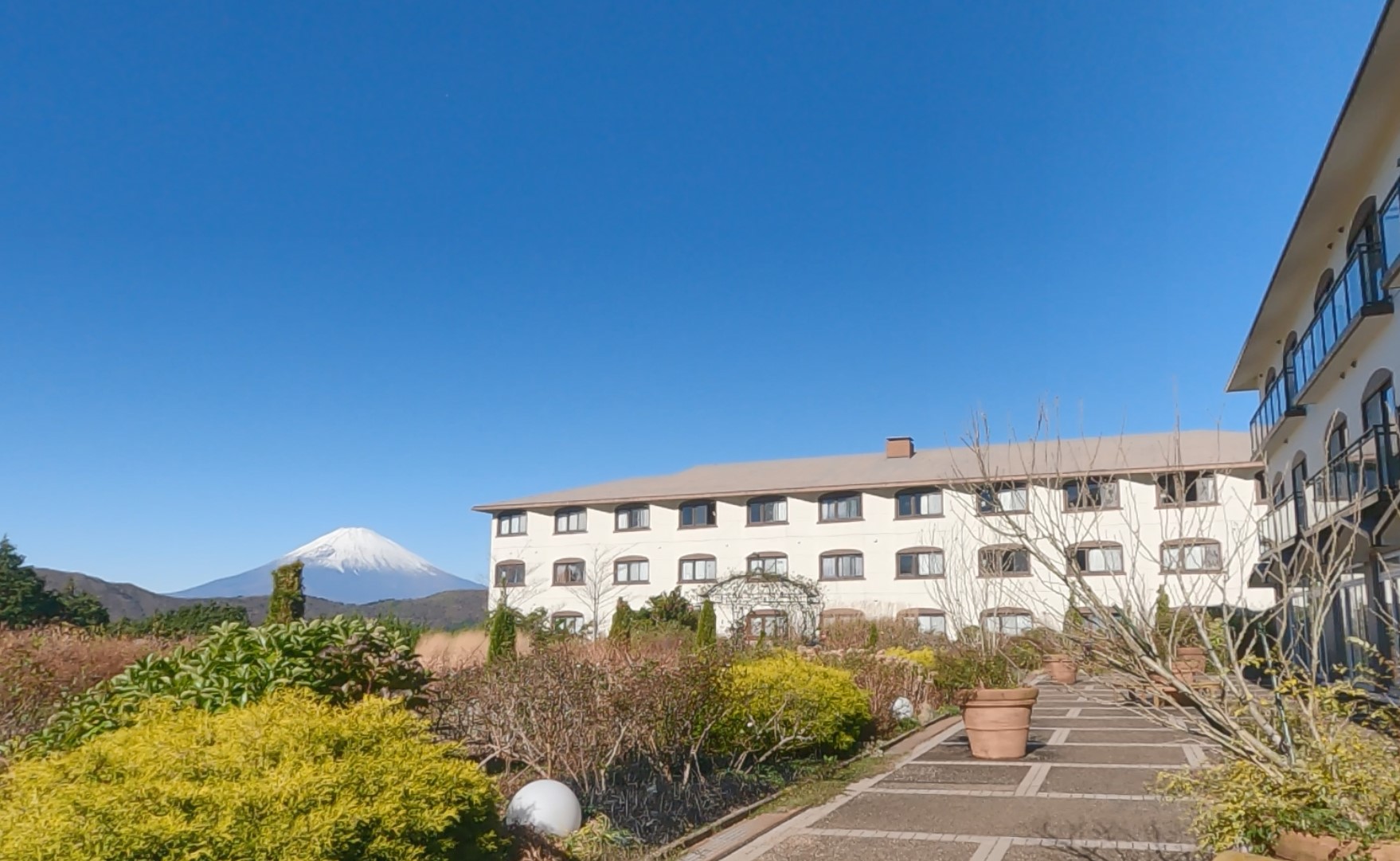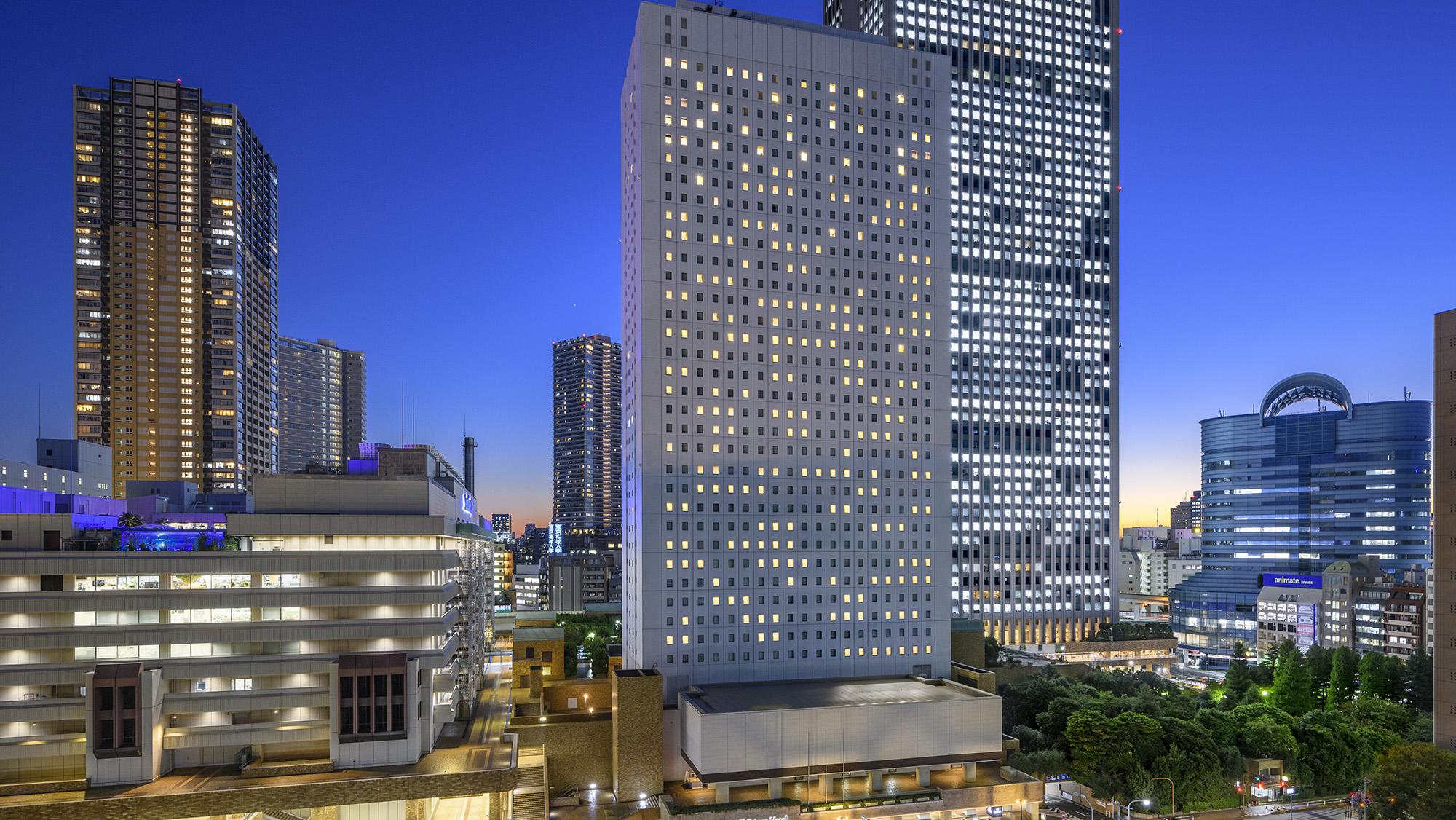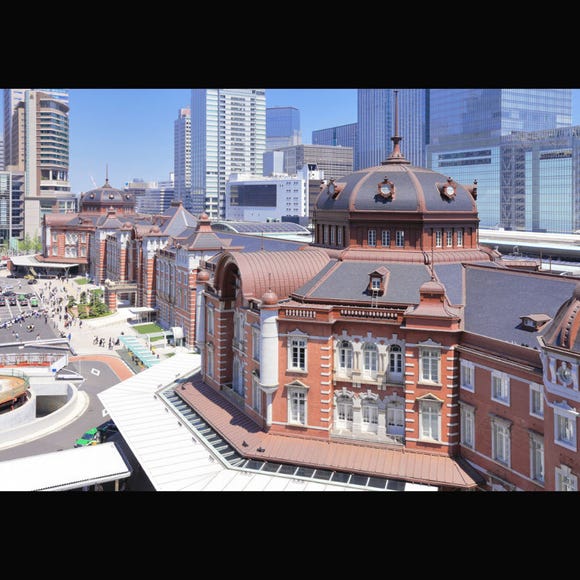
What's the Weather Like in Hakone? Seasonal Tips on What to Wear Before You Go
- Written by: Yoko
From colorful flower fields to breathtaking views of Mt. Fuji, Hakone offers something special in every season. This year-round resort destination is known for its ever-changing natural beauty, making it perfect for spring blossoms, summer hikes, autumn foliage, and winter onsen escapes.
Before planning your trip, it’s important to understand Hakone’s unique climate. Due to its mountainous terrain, temperatures can vary not only by season but also by area and time of day. In this guide, we’ll help you get a sense of the seasonal weather trends in Hakone and what to pack for a comfortable visit.
Main image: PIXTA
This page may include promotional content)
How much does temperature and rainfall in Hakone differ throughout the year?

Hakone experiences a wide range of temperatures throughout the year, ranging from as chilly as -7ºC (19ºF) to peaks of 30ºC (86ºF). Despite this, during the peak summer months of July and August, temperatures tend to average around 22ºC (72ºF), indicating that extreme heat is short-lived.
In contrast, Hakone Yumoto, which lies at a lower altitude compared to most of the region, can see summer highs of up to 37ºC (99ºF). This is quite comparable to the summer warmth experienced in Tokyo.
Meanwhile, Sengokuhara, perched at an elevation of 645 meters, typically registers temperatures 3 to 4 degrees lower than in Hakone Yumoto.
Given the varied elevations throughout Hakone, the climate can differ significantly between areas. When venturing through this region, it's wise to have versatile clothing on hand, suitable for adding or shedding layers as the weather demands.
Hakone Seasonal Clothing Guide
While the climate of Hakone Yumoto closely mirrors that of Tokyo, other parts of Hakone experience a noticeable temperature drop, particularly at elevated regions, with a decrease of 3 to 4 degrees.
This guide helps you choose appropriate attire for each season based on altitude-driven temperature variations.
What to wear in Hakone in Spring (March - May)

Springtime in Hakone is when the cherry blossoms and azaleas come into full bloom. However, in March, the daytime temperatures still tend to be low, resulting in colder weather. It is best to bring winter clothes such as a coat, as the higher altitudes make for more severe cold than in Tokyo.
Daytime begins to warm up in April, however the temperatures can still vary greatly between night and day, so it is recommended to wear pants that fully cover your legs and bring along a coat or a hoodie.
The temperatures continue to rise into May, though not as much as in Tokyo. The Sengokuhara area is still pretty chilly, so it is recommended to bring a jacket or cardigan.
What to wear in Hakone in Summer (June - August)

In June, you'll have the opportunity to admire the vibrant hydrangea blossoms from the mountain train while experiencing a gradual increase in temperatures. However, be mindful that mornings and evenings can still be a bit chilly, so it's a good idea to have some light outerwear like a shirt or a cardigan on hand. If you plan to explore the cooler Sengokuhara area as well, don't forget to pack a jacket!
During the rainy season, which typically lasts from mid-June to mid-July, it's advisable to bring rain gear. The average temperature in July hovers around 22°C (71°F), which is similar to Tokyo's May climate. Nonetheless, having something with long sleeves is still a wise choice. In the elevated regions of Hakone, the sun can be quite intense, so make sure to apply sunscreen and consider bringing a parasol or a hat for extra protection.
August marks the peak of summer, with bustling events like summer festivals drawing large crowds. While the average temperature remains around 22°C (71°F), it can soar above 30°C (86°F) on certain days. Nights and mornings, on the other hand, can be significantly cooler, with temperatures dropping to around 15°C (59°F). To stay comfortable, it's a good idea to have a long-sleeved jacket with you, especially during those cooler periods.
What to wear in Hakone in Autumn (September - November)

Even though the days may still feel warm in early September, mornings and evenings start to cool down noticeably. With temperature differences depending on altitude, it’s best to dress in layers that are easy to put on or take off.
Autumn in Sengokuhara is marked by its famous silver grass fields. By October, average temperatures drop to around 13°C (55°F), so sweaters and jackets become essential—especially in higher areas like Sengokuhara.
October also tends to be the wettest month of the year in Hakone. With chilly rain likely, be sure to bring a compact umbrella and waterproof layers. Around Lake Ashi, cold winds begin to pick up, so clothes that cover your neck can help you stay warm.
By November, the fall foliage is at its peak, but temperatures can dip below freezing, especially in the mornings and at night. Be sure to pack a heavy coat and dress warmly to enjoy the crisp autumn air.
What to wear in Hakone in Winter (December - February)

Winter offers the perfect opportunity to catch a glimpse of the snow-covered Mt. Fuji, presenting a picturesque sight. However, it's crucial to be well-prepared for the cold winter weather. Don't forget to bundle up with coats, scarves, and hats, especially if you plan to visit the Sengokunohara area and Lake Ashi, where the cold can be particularly severe, and snowfall is possible.
In January, the chill reaches its peak, with an average temperature of just 1°C (34°F) and the possibility of dropping to lows of -8°C (18°F). During this time, roads and ground surfaces often freeze, so it's essential to wear anti-slip footwear and exercise extra caution when driving to ensure safety.
Tips for Attending Seasonal Events in Hakone

Hakone boasts a plethora of seasonal events and attractions that draw enthusiastic crowds. Here's a concise overview of some of the prominent events.
1. Cherry Blossom Viewing (Late March~Late April)
One of the best cherry blossom viewing spots in Hakone is the Hayakawa River embankment, where around 1,500 cherry trees bloom along a 600-meter stretch. The area is also lit up for nighttime viewing from 6 PM to 9 PM during peak season. Since mornings and evenings are still quite chilly, don’t forget to bring a warm jacket.
- Hakone Yumoto: Typically flowers around March 26 and peaks around April 2
- Hakone Gora Park: Typically flowers around April 3 and peaks around April 10
- Lake Ashi and Sengokuhara area: Typically flowers around April 13 and peaks around April 21
- Onshi Hakone Park: Typically flowers around March 24 and peaks around March 28
2. Azaleas (Early to Late May)
Hakone boasts numerous renowned azalea locations, including the Odakyu Yama-no-Ue Hotel, known for its vibrant, expansive azalea carpet. Daytime visits are pleasant as the flowers are in full bloom, but evenings can feel chilly, so consider bringing a light jacket.
3. Hydrangea Train (Mid-June~Mid-July)
Summertime in Hakone brings a variety of events near the Hakone Shinto shrines, featuring fireworks displays, night shops, mikoshi (palanquins), and taiko drums. The refreshing breeze over Lake Ashi offers respite from the summer heat, but strong sunlight demands a hat. Be prepared for sudden downpours by carrying an umbrella.
4. Lake Ashi Summer Festival Week (July 31~Early August)
Similar to the Hydrangea Train, summer events near the Hakone Shinto shrines include fireworks, night shops, mikoshi, and taiko drums. Lake Ashi provides a cool breeze, but the sun can be intense, so remember your hat. Prepare for unexpected heavy downpours with an umbrella.
5. Autumn Leaves (Late October~Early December)
As Hakone's foliage transforms into stunning reds and yellows, temperatures drop rapidly. Ensure you stay warm with a sweater, jacket, and a thick coat. Expect more rainy days during this season, so carry proper rain gear.
6. Lake Ashi Upside-down Fuji (Early December~Early February)
Winter in Hakone reveals a snow-covered Mt. Fuji reflected like an upside-down painting on Lake Ashi's surface. The best viewing is on clear early mornings, but be aware that Hakone winters are very cold. Dress warmly with knit or fleece, a heavy coat, scarf, gloves, and a hat.
-

-
Address
Hakone-machi, Ashigarashimo-gun, Kanagawa Lake Ashi, 250-0500
View Map -
Nearest Station
Hakone-Yumoto Station (Hakone Tozan Railway)
35 minutes by bus
- Phone Number 0460-85-8911
-
Address
Hakone-machi, Ashigarashimo-gun, Kanagawa Lake Ashi, 250-0500
Notice: Sightseeing in Owakudani
As of April 2025, the volcanic alert level at Owakudani is at 1—the lowest on a 5-level scale. However, active steam vents remain in the surrounding area, and volcanic gases such as hydrogen sulfide and sulfur dioxide are still present. Visitors with respiratory conditions like asthma, heart problems, or those feeling unwell are advised to avoid the area.
The Owakudani Nature Trail is currently open by advance reservation only. As part of safety measures, participants must wear helmets and follow the guidance of two staff members during a group-led tour. Tours are held four times daily (10 AM, 11:30 AM, 1 PM, and 2:30 PM) with a limit of 30 people per session, and reservations must be made online. At the site, a safety support fee of 800 yen per person is required—payment is cashless only, using credit cards or IC cards.
-

-
Address
1251, Sengokuhara, Hakone-machi, Ashigarashimo-gun, Kanagawa, 250-0631
View Map -
Nearest Station
Gora Station (Hakone Tozan Railway / Hakone Tozan Cable Car)
- Phone Number 0460-84-5201
-
Address
1251, Sengokuhara, Hakone-machi, Ashigarashimo-gun, Kanagawa, 250-0631
After working as a ground hostess and web director, she became an independent writer in 2013. She writes extensively on topics such as relationships, family issues, and Japanese culture. Airports and military bases are her favorite relaxation spots.
- Area
- Category
*Prices and options mentioned are subject to change.
*Unless stated otherwise, all prices include tax.
Popular Tours & Activitiess
Recommended places for you
-

A Travel Game Changer! Go Hands-Free Between Tokyo and Kyoto with LUGGAGE EXPRESS by JTB and JR Tokai
by: Guest Contributor
-

Don't Miss Out! The One Thing You Must Do Before Shopping at Mitsui Shopping Park LaLaport: Get Your Max 10% OFF Coupon Book
-

New Seibu L00 Series Launching in 2026! What to See Along the Tokyo-Area Golden Route
by: Guest Contributor
-

Tokyo City Pass Upgrade: Harry Potter Studio Tour & Top Sights up to 85% Off
by: Guest Contributor
-

Keisei × Keikyu 16-Temple Goshuin Tour: Discover Deeper Tokyo & Yokohama
by: Guest Contributor
-

Simply Oishii Wagashi School Discover Japanese Culture Through Wagashi: A Hands-On Experience!
by: Guest Contributor
Inspiration for Accommodations
-

Enjoy Mt. Fuji from the Comfort of Your Room! Recommended Ryokan with Mt. Fuji View
-

Stay Near the Cherry Blossoms! Hotels for Cherry Blossom Viewing in Tokyo
-

Family-Friendly Hotels with Free Shuttle to Disneyland: Convenient Access for a Magical Stay
-

Top Ranked Hakone Hotels with Mt. Fuji View: Enjoy Stunning Scenery from Your Private Space
-

Convenient Tokyo Hotels with Airport Shuttle: Ideal for Families and Heavy Luggage
-

Stunning Tokyo Tower View Hotels: Enjoy Spectacular Scenery from Your Private Space
-

Convenient Asakusa Hotels with Kitchens: Ideal for Extended Family Visits
-

Experience Luxury: Hakone's 10 Best Five-Star Accommodations
-

Enjoy Mt. Fuji Autumn Leaves! Top Hotels Near the Popular Autumn Leaves Corridor
-

Experience Hakone Fall Foliage from Your Room with Stunning Views
-

10 Important Japanese Phrases to Know Before You Enter a Japanese Convenience Store!
by: Teni Wada
-

JR Edition: Visit all of Tokyo in one Day with the Tokyo Metropolitan District Pass!
-

Tokyo Events: Celebrating Earth Day Tokyo 2018
-

Secrets to Shopping in Japan: Guide to Annual Sales in Japan & Where to Shop
by: Miyu Shimada
-

10 Top Tourist Spots and Attractions near Tokyo: Day Trip to Enjoy History & Nature
-

Explore Izumi, a charming Japanese city that attracts over 10,000 cranes during the winter
- #best ramen tokyo
- #what to buy in ameyoko
- #what to bring to japan
- #new years in tokyo
- #best izakaya shinjuku
- #things to do tokyo
- #japanese nail trends
- #what to do in odaiba
- #onsen tattoo friendly tokyo
- #daiso
- #best sushi ginza
- #japanese convenience store snacks
- #best yakiniku shibuya
- #japanese fashion culture
- #best japanese soft drinks


























